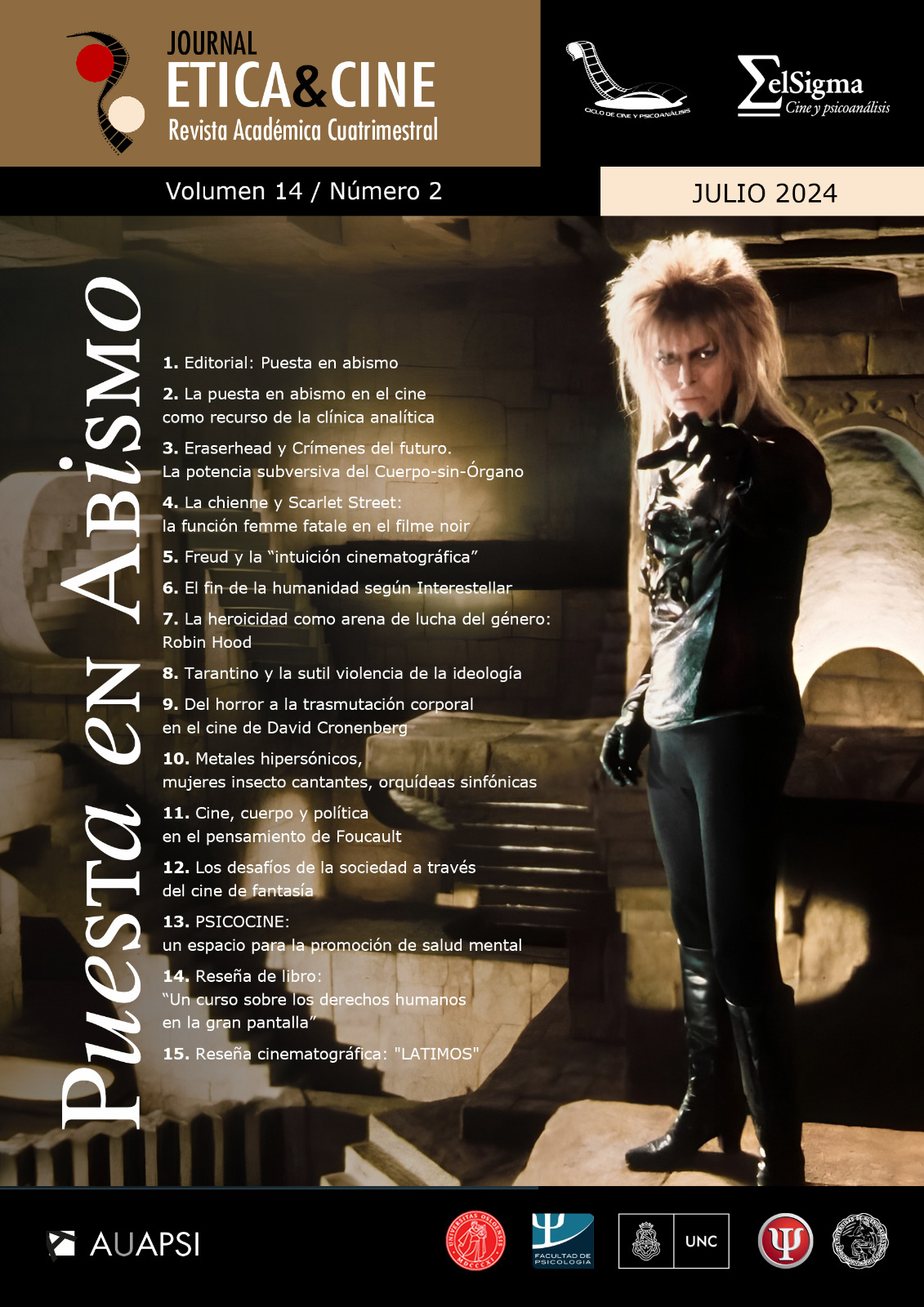The challenges of society through fantasy cinema: the role of the forest
DOI:
https://doi.org/10.31056/2250.5415.v14.n2.45765Keywords:
Film, Fantasy, Reality, Forest, Society, EthicsAbstract
The film is intimately involved by the concerns, the tendencies and the aspirations of the time. Having understood the connection between the creators and recipients of the film, this article seeks to elucidate whether such a foundation can be extended to fantasy cinema. In particular, we explore the ethical function of the forest in audiovisual narrative, since in the fantasy genre forests play a crucial role. Our goal is to understand its meaning and its importance in these stories. The corpus is established by works written and directed by one of the most prominent directors of the genre in the Basque Country: Errementari (2017) and Irati (2022) by Paul Urkijo Alijo. Through textual analysis, we can describe how a certain organization of indicators leads the spectator to concrete meanings; in this case, the author clearly highlights the importance of forests, offering different perspectives in each of the films. The forest takes on a culminating meaning in human development.
Downloads
References
Aranzubía, A.; Aguilar, S. y Castro-de-Paz, J.L. (2022). El cine fantástico de la Escuela Oficial de Cinematografía. Matheson, Bradbury y Sheckley en Monte Esquinza. Arte, Individuo y Sociedad, V. 34, n. 4, pp. 1335-1351. Doi: https://dx.doi.org/10.5209/aris.78592
Burguera, J.J. (2018). Cine de fantasía y cine fantástico. El destinador como fundamento de la dicotomía entre géneros. Trama y fondo: revista de cultura, n. 44, pp. 135-152.
Cirlot, J.E. (1982). Diccionario de símbolos. Editorial Labor, Barcelona. https://doi.org/10.1515/9783112320464-049
Chevalier, J. y Gheerbrant, A. (1986). Diccionario de los símbolos. Herder, Barcelona. https://doi.org/10.15581/009.19.31072
Campbell, J. (1990). El héroe de las mil caras: psicoanálisis del mito ( [trad.] Hernández, J. F) Fondo de Cultura Económica, México DF.
Del Pozo Ortea, M. (2007). Soldados de salamina: Terapias para después de una guerra. University of Massachusetts, Massachusetts. https://doi.org/10.1386/ijis.24.1.35_1
González Requena, J. (2007). El bosque, el sueño y el cine. en P. Poyato, (ed.), Lo rural en el cine español, Diputació de Córdova, Córdova, pp. 99-142.
Leopold, A. (1949). A Sand County almanac. Oxford Univ. Press, New York.
Roas, D. (2011). Tras los límites de lo real. Una definición de lo fantástico. Páginas de espuma.
Rocci, R. (2004). Implicaciones éticas de narrativas yaganes y mapuches sobre las aves de los bosques templados de sudamérica austral. Ornitología neotropical, (15), 435–444.
Sánchez-Escalonilla, A. (2009). Fantasía de aventuras: claves creativas en novela y cine. Ariel, Barcelona.
Todorov, T. (1981). Introducción a la literatura fantástica (2). Premia, México D.F.
Vogler, C. (2002). El viaje del escritor. Las estructuras míticas para escritores, guionistas, dramaturgos y novelistas, Ediciones Robinbook, Barcelona.
Yáñez Martínez, M.B. (2020). La narrativa como recurso metodológico dinamizador del aprendizaje. Revista Sonda. Investigación en Artes y Letras, (9), 13-26.
Yañez Velasco, M. (2018). El bosque literario. Genealogía de un paisaje simbólico», Universitat Pompeu Fabra. http://hdl.handle.net/10803/462116
Zumalde Arregi, I. (2006). La materialidad de la forma fílmica: crítica de la (sin)razón posestructuralista. Servicio editorial de la Universidad del País Vasco / Euskal Herriko Unibertsitateko Argitalpen Zerbitzua, Leioa.
Zumalde, I. y Castro de Paz, J.L. (2022). La arboleda perdida. El bosque y el árbol en el cine vasco y gallego contemporáneos. Quintana, (22), 1-17. https://doi.org/10.15304/quintana.21.7955
Downloads
Published
How to Cite
Issue
Section
License
Copyright (c) 2024 Ética y Cine Journal

This work is licensed under a Creative Commons Attribution-ShareAlike 4.0 International License.
Los autores que publiquen en Ética y Cine Journal aceptan las siguientes condiciones:
Los autores/as conservan los derechos de autor © y permiten la publicación a Ética y Cine Journal, bajo licencia CC BY-SA / Reconocimiento - Reconocimiento-CompartirIgual 4.0 Internacional. La adopción de esta licencia permite copiar, redistribuir, comunicar públicamente la obra, reconociendo los créditos de la misma, y construir sobre el material publicado, debiendo otorgar el crédito apropiado a través de un enlace a la licencia e indicando si se realizaron cambios.

Este obra está bajo una licencia de Creative Commons Reconocimiento-CompartirIgual 4.0 Internacional.




